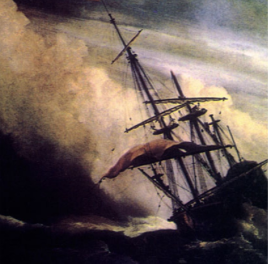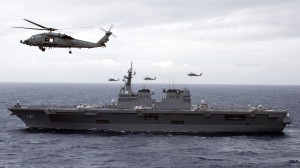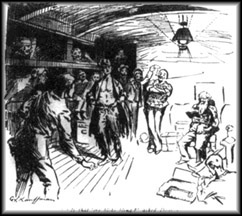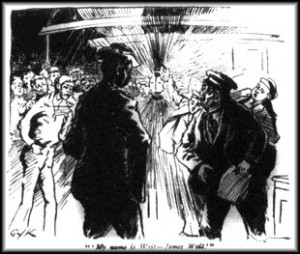The ship, a fragment detached from the earth, went lonely and swift like a small planet. Round her the abyss of sky and sea met in an unattainable frontier. A great circular solitude moved with her, ever changing and ever the same, always monotonous and always imposing. Now and then another wandering speck, burdened with life, appeared far off – disappeared, intent on its own destiny.
When re-watching Liquid Traces – The Left-to-Die Boat Case, by Charles Heller and Lorenzo Pezzani, the above fragment from Joseph Conrad’s book The Nigger of the Narcissus came to mind. Despite its offensive title (reason for which the first American edition was retitled The Children of the Sea: A Tale of the Forecastle), Conrad’s book actually involves quite some subtle postcolonial critique. To sum up, the book tells the story of James (or Jim) Wait, a black crewmember of a commercial vessel who falls ill with tuberculosis during the journey from Bombay to London. Like the river steamer in Heart of Darkness, The Narcissus becomes a perfect colonial trope: it is at once a hybrid place where different cultures and personae meet (the crew consist of a Russian Finn, two Scandinavians, …) and at once a closed space bound with suspicion and terror, which spares no-one from its violent grip.
During the trip each crewmember tries in some way to take ownership of Wait, serving him “with rage and humility” and fiercely attempting to “blank his black soul”. At the same time, the presence of Wait also emanates repulsion to the white crew members, as his very presence “seemed to hasten the retreat of light by his very presence.”
 “We hated him more than ever… we did not want to loose him,” one crewmember says at a certain point. By all means Wait became “the tormentor of all our moments,” another crew member reveals. To some extent, this passage also reminded me of Barbara Spinelli’s invocation regarding the deaths of Lampedusa one year ago, on 9 October 2013. Invoking the law of the seas, she writes that our European morale remains inherently split, in an Antigonesque way, between the humanitarian values that force us to save lives, and the law of the sovereign, the nomos despotes, which defends Europe’s borders… James Wait, like Heller and Pezzani’s left-to-die-boat, powerfully invokes this tormented soul in interesting and complementary ways… The sea lacks generosity, Conrad writes at another point. In its permanent stillness, it personifies the irresponsible consciousness of power.
“We hated him more than ever… we did not want to loose him,” one crewmember says at a certain point. By all means Wait became “the tormentor of all our moments,” another crew member reveals. To some extent, this passage also reminded me of Barbara Spinelli’s invocation regarding the deaths of Lampedusa one year ago, on 9 October 2013. Invoking the law of the seas, she writes that our European morale remains inherently split, in an Antigonesque way, between the humanitarian values that force us to save lives, and the law of the sovereign, the nomos despotes, which defends Europe’s borders… James Wait, like Heller and Pezzani’s left-to-die-boat, powerfully invokes this tormented soul in interesting and complementary ways… The sea lacks generosity, Conrad writes at another point. In its permanent stillness, it personifies the irresponsible consciousness of power.
In Liquid Traces, Heller and Pezzani follow the journey of a rubber boat, carrying seventy-two people who left the Libyan coast on 27 March 2011. After a fourteen days journey, drifting across a “sea of impunity”, the boat washed again ashore on the Libyan coast, with only eleven passengers alive.
[The boat] had her own future… she had an intolerable load of regrets and hopes … condemned by men to an ignoble fate.
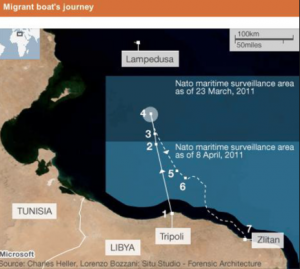 The journey took place in what the authors call a mobile and de-territorialized border, which, paradoxically, acts both as a killer and a live saver. The ambivalence of Europe’s outer border appears, they say, in the linear tracing of what are often overlapping and conflicting maritime jurisdictions between states bordering the Mediterranean, which they represent as conflicting sovereign territorialities in a liquid of refolding waters.
The journey took place in what the authors call a mobile and de-territorialized border, which, paradoxically, acts both as a killer and a live saver. The ambivalence of Europe’s outer border appears, they say, in the linear tracing of what are often overlapping and conflicting maritime jurisdictions between states bordering the Mediterranean, which they represent as conflicting sovereign territorialities in a liquid of refolding waters.
… immobile, floating in perfect stillness
At the same time, these invisible borderlines figure in a “complex assemblage” of different transnational and national agencies that is aimed to track, share and communicate information about people’s flow across the sea. Despite these overlapping technologies, migrants’ lives were not saved when they confronted the sea’s deadly waters during those two endless weeks.
 “[the boat] drove to and fro in the unceasing endeavor to fight her way through the invisible violence of the winds: she pitched headlong into dark smooth hollows; she struggled upward over the snowy ridges of great running seas; she rolled, restless, from side to side, like a thing in pain.”
“[the boat] drove to and fro in the unceasing endeavor to fight her way through the invisible violence of the winds: she pitched headlong into dark smooth hollows; she struggled upward over the snowy ridges of great running seas; she rolled, restless, from side to side, like a thing in pain.”
One of the passengers records their encounter with a military vessel– probably the Spanish Mendez Nunez of the Belgian Narcisse, which, despite its proximity, choose not to intervene to save migrant lives.
… looming up, opaque and bulky, like strange and monumental structures abandoned by men to an everlasting repose…
The paradox is this: despite its departure during a period of massive Frontex and NATO deployment following the Tunisian and Libyan uprisings, and despite the vicinity of 38 NATO ships and numerous commercial vessels, the migrants who were traveling across the Mediterranean were left to die while being actively observed through an assemblage of multiple, irresponsible eyes. This paradox inspires Heller and Pezzani to ask a few poignant questions, such as: how to reconstruct violations when the murder weapon is water itself? What are the conditions that transform the sea into a deadly liquid?
They conclude that “the sea is an eurythmic space of hierarchized mobility: speedy for some … slow and deadly for the unwanted.”
To some extent Liquid Traces appears to confirm Donna Harraway’s point that “[v]ision is always a question of the power to see – and perhaps of the violence implicit in our visualizing practices” – a point Derek Gregory repeatedly has made with regard to drone use in late modern warfare.
Rather than being a God’s eye, which towers high above human activity, as if it were seeing from nowhere, the assemblage that surveys Mediterranean waters constitutes a patchy puzzle of often conflicting and contradictory visions and legislations, and – I might add – quite different and opposing temporalities. As Harraway points out, the main question in this case becomes not what but “how to see? Where to see from? What limits to vision? What to see for? Whom to see with? Who gets to have more than one point of view? Who gets blinded? Who wears blinders? Who interprets the visual field? What other sensory powers do we wish to cultivate besides vision?” And… “with whose blood were my eyes crafted?”
One lesson that can be drawn from this work is indeed that no picture is innocent. As Susan Sontag has similarly noted with regard to the pictures of torture from Abu Ghraib, the dangerous tendency is frequently to transfer violence to the single photograph – while in in fact the picture itself has become an act of instilling and disseminating terror. The act of surveying the suffering of others – Susan Sontag’s seminal book title – also begs a crucial question about the where and how of testimonies of violence. What is often portrayed as observing from nowhere in fact betrays a precise position, of viewing and speaking from a privileged place, as either a survivor or a technological eye that literally crafts the ‘objective reality’ through which unprivileged – or death – stories reach wider publics.
“We wanted to blank his black soul…”
In the same vein, Harraway furthermore opens another interesting perspective by invoking the embodied nature of all – not just human – vision. Contrary to the surveying drones that are busy tracking liquid traces, she tries to reclaim, through such situated knowledge, the “sensory system” that has been used to construct vision. The God’s eye fucks the world to make techno-monsters, she quotes Zoe Sofoulis as saying. But how to see from below is a problem requiring at least as much skill, with the implication of one’s body and language, and by mediating vision, as the most hi-fi techno-scientific visualizations one can get.
It is here that embodied feminist objectivity and a postcolonial perspective on the making of the migrant subject meet. Similarly to Conrad, the Narcissus in Heller and Pezzani’s story acquires the form of a constitutive force. At once surveying and – apparently, but deceptively – caring, at once imposing and terrorizing, the drones and satellite imageries literally fuck the world by creating a sovereign archipelago of floating and flying techno-monsters.
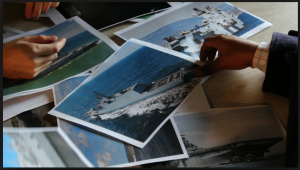 Like Harraway, Heller and Pezzani argue for a politics of location, of positioning and situating, where partiality, and not universality, is the condition of being heard to make rational knowledge claims. The embodied language of the passengers drifting on the left-to-die boat, like the Nigger of the Narcissus, challenges this God’s view by offering a contrasting view that is clearly located, reaches out from a concrete place. This has made it possible, for example, to present some of the evidence of Liquid Traces, through a coalition of NGO’s, to testify against several state governments who participated in the NATO surveillance during the left-to-die boat drift in March-April 2011.
Like Harraway, Heller and Pezzani argue for a politics of location, of positioning and situating, where partiality, and not universality, is the condition of being heard to make rational knowledge claims. The embodied language of the passengers drifting on the left-to-die boat, like the Nigger of the Narcissus, challenges this God’s view by offering a contrasting view that is clearly located, reaches out from a concrete place. This has made it possible, for example, to present some of the evidence of Liquid Traces, through a coalition of NGO’s, to testify against several state governments who participated in the NATO surveillance during the left-to-die boat drift in March-April 2011.
Heller and Pezzani’s account unfortunately remains rather the exception than the rule in the ever-growing literature on border surveillance and international migration regimes.
Most critical studies limit themselves to portraying the violent visions underpinning migration control assemblages – whether through the dissemination of biometric data, changing institutional constellations in the so-called migration industry, or the systematic encampment of migrants across an archipelago of detention centres in the Mediterranean, Pacific and US-Mexico borderlands. Few actually make an effort to also describe the visualizing practices through which sovereign violence is actively being reproduced and/or contested in these expanding borderlands (unless someone can point me in the right direction?). As Alexandra Hall writes in Border Watch (where she discusses her ethnographic work in a Locksdon immigration removal centre), understanding security regimes and their effects on individual lives requires knowledge on the ways such regimes are being reproduced within daily, even banal, social practices and interactions. On the one hand, this involves tracing the “micro-physics of power” – as Foucault would call them, in other words: the exceptional measures utilized to govern “out-of-place” populations. On the other hand, this raises a need to investigate how migrants – and not just their bodies – have become central in driving transformation processes across the globe (as Sandro Mezzadra and Brett Neilson have written repeatedly). Migrant subjectivity does not emerge from totalizing institutions but from concrete encounters, between travellers and border agents, brokers and their clients, security executives, guards and detainees. Borders, as a result, are never univocal but they are polysemic; they literally open up a margin from which to talk to the main body politic (more on this can be found in the writings of Etienne Balibar and Engin Isin, amongst others).

I want to end this exploration by quoting Karim Haidari, in one of the rare direct testimonies on the construction of migrant subjectivity in the ‘liquid’ landscape Heller and Pezzani partly describe. While escaping from Afghanistan to Germany, he writes:
“… The plane plane descended. I was the authority, giving myself the right to come here. But soon the power shifted to the voice of a man behind the immigration desk: ‘Passports please!’ … The advice of the agent rang in my mind: if they know the airline they might send you back on the same plane. ‘No… Anglish,’ I hesitated. Oh, my first conversation started with a lie. How many lies should I say before I could prove the truth? Why do reasons fail against the system?
The officers started to search our bags. Groups of passengers were passing by, casting puzzled glances. I felt humiliated, as if I had committed a crime…
I looked into his eyes. I was on the brink of saying in English: ‘Listen to me, I’m screwed up by the system of my own country. I need shelter and food for now. I’m capable of putting my own bread on the table. So please let me get in. I wouldn’t have left my home if I didn’t have to. I understand your concerns but my reasons are strong. Can’t we sit and talk as human beings?’ But I remained silent. Humanity is not the superpower in this real world… Every limb of my body was shaking. It wasn’t just the fear of going back home and getting into trouble again. It felt as if a nightmare was about to repeat itself.
(…)
There was a Sikh immigration officer sitting near the door behind a small desk. He was doing nothing throughout the hours we were waiting there. He came to us and handed out parcels of food. He gestured towards the free drink machine. Suson was hungry and started to unpack her food.
‘Don’t you want some?’ she asked.
But I didn’t have the appetite for anything but getting out of here.
‘They give rations to refugees all over the world,’ I said.
She glanced at me, pausing while biting the plastic with her teeth.
But I was delighted with a discovery. I had found my new identity: I’M A REFUGEE.”
(this short excerpt does not even do full justice to the emotional political account Haidari wrote for the New Internationalist; you may consult the full article here).

